The LG V20 achieves an excellent overall DxOMark Mobile score of 85 points, ranking just behind the LG G5 with 86. (Click the link for our full review of the LG G5.)
Some autofocus irregularities, specifically in video, have reduced the LG V20’s overall score compared to the G5’s, but the LG V20 remains an excellent smartphone, particularly for still photography.
With a photo sub-score of 86 points, the LG V20’s 16Mp sensor packs plenty of detail, with relatively low levels of noise, and captures generally good target exposures with vivid and accurate color. Low-light exposures, even in extreme low light, are no less impressive, recording good texture and color, making the LG V20 a good all-round option for still photography. In default mode, it captures 12Mp images in a 16:9 aspect ratio (4656 x 2620 pixels), with the option to switch to a 4:3 ratio to maximize the sensor’s full 16Mp resolution.
For video, the LG V20 achieves the same sub-score of 82 as the LG G5. The LG V20 makes up for the aforementioned video focusing irregularities, as well as for some video stabilization issues, with generally good target exposures, along with excellent noise reduction and detail preservation when shooting video in bright light.
Outdoor: Outstanding detail
Shooting outdoors and in bright light, images from the LG V20 are generally well-exposed, with good contrast and dynamic range. Some exposure failures do occur, however, mainly in tricky high-contrast scenes in which the very brightest highlights are overexposed.
The LG V20 renders vivid and pleasant colors in accurate exposures, and white balance is generally neutral when shooting outdoors, although a slight pink colorcast is sometimes evident. The high-resolution 16Mp sensor ensures excellent detail preservation, making the LG V20 an excellent choice for recording intricate and complex scenes. Noise reduction is generally very well-controlled, too, and although a slight build up of luminance noise is visible in areas of uniform color (such as the sky), it’s not too concerning.
Indoors: Amazing in low light
The LG V20’s image-stabilized f/1.8 primary lens helps ensure generally good target exposures in low light. Under extremely low (5 and 10 Lux) light sources, the LG V20 combines slow shutter speeds (for example, 1/9 sec), with high ISO sensitivities to record some of the brightest low-light exposures we’ve seen.
The stabilized lens effectively reduces camera shake when using such slow shutter speeds, too, but watch out for subject movement and motion blur when shooting in such low-light conditions. The LG V20’s effective noise reduction also reduces noise buildup to a fine luminance noise in uniform areas, but intricate details are often lost as a result of the smoothing, which is particularly noticeable in low-contrast areas.
Color rendition remains excellent when shooting indoors, notably in accurate target exposures, which display strong and bold color. White balance is good, too, although it can be a little inconsistent, depending on the lighting conditions: the camera records accurate color under fluorescent light, but records a slight pink colorcast when shooting under tungsten light sources.
Details: Explaining the score
Exposure and Contrast (87)
Many successful target exposures in all lighting conditions, with particularly bright indoor exposures in extreme low light, helped the LG V20 secure a good overall score for exposure and contrast. Completely overexposed highlights in some high-contrast scenes reduced the overall score, however.
Color (83)
Generally bold and vivid color in both outdoor and indoor exposures resulted in a good overall score for color. Some white balance inconsistencies, including a slight pink colorcast in some outdoor exposures and in low-light images shot under tungsten light sources, reduced the score. Minor color shading is also visible in some outdoor and low-light exposures.
Autofocus (85)
Generally fast and accurate exposures in bright light ensured a good overall score for autofocus. However, some focusing irregularities, with the occasional failure even in bright light conditions, as well as a lack of smoothness in preview mode, reduced the overall autofocus score.
Texture (91)
Noise (88)
The LG V20 achieves its highest scores in the texture and noise categories, thanks to excellent fine detail recorded by the 16Mp sensor in outdoor exposures, and well-controlled noise reduction in low-light images. Noise is effectively reduced to a fine luminance noise in low-light images, and although a slight loss of fine detail in low contrast areas occurs as a result, it’s nicely balanced.
Artifacts (84)
The LG V20’s primary lens generally controls artifacts well controlled. A slight ringing is visible along contrast edges, and a cyan shift close to saturation in the blue hues is visible in the sky. Strong visible moiré and maze artifacts are also visible in areas of very fine detail.
Flash (81)
The LG V20’s LED unit delivers accurate flash exposures with good detail preservation and pleasant color rendering. Although we observed some minor focusing and white balance variations over consecutive flash shots, on the whole it’s pretty successful. Mixing flash with tungsten light sources, white balance turns a little red, with some noticeable color shading between the center and edges of the frame. Using flash as the only light source, the output is nicely centered in the frame, although some light attenuation and chromatic noise are visible towards the corners.
Video (82)
The LG V20 shoots a range of video resolutions, including 2160p@30fps, 1080p@30fps, and 720p@120fps. Outdoor videos generally feature good target exposure and accurate white balance, although dynamic range can be a little limited.
Fine details are well-preserved in outdoor videos, too, with good noise reduction in bright light. Indoor videos display noticeable luminance noise, however, with some chromatic or colored noise visible, as well as a loss of fine detail in low-light videos.
Despite generally good white balance, some colorcast irregularities are also noticeable, particularly while subject tracking or during lighting changes, when adaptation can be slow and inconsistent. Color shading is also visible in some videos, with a slight bluish cast when shooting under fluorescent light sources. Video stabilization effectively reduces camera shake for walking movement, but subject motion blur is very visible, as well as a noticeable judder while panning. Some aliasing is also visible in videos, and there’s a noticeable inconsistency in sharpness across the field. Video autofocus is generally accurate, but convergence can be slow when transitioning from macro to infinity, with slight oscillations evident. We observed some video focus irregularities, too, including unstable refocusing as the lighting changes and during tracking, where focus sometimes drops.
The scores:
Photo Pros
- Very good detail preservation in bright light.
- Good noise reduction in low-light conditions.
- Generally good target exposure.
- Bright exposures in extreme low light.
- Fast and generally accurate autofocus.
- Vivid and pleasant color in bright light.
Video Pros
- Generally good target exposure.
- Good noise reduction in bright light.
- Good motion reduction.
- Good detail preservation in bright light.
Photo Cons
- Highlights are over exposed in high-contrast scenes.
- Focus irregularities and occasional failures visible in bright light.
- Slight pink colorcast in outdoor scenes.
- Cyan shift close to saturation visible in the hues of the sky.
Video Cons
- Motion blur is very visible in all lighting conditions.
- Slow autofocus convergence when transitioning from macro to infinity.
- Slight autofocus oscillations sometimes visible in preview.
- Noticeable inconsistency in sharpness across the field.
- Visible focus drop during tracking.
- Limited dynamic range shooting video in bright light.






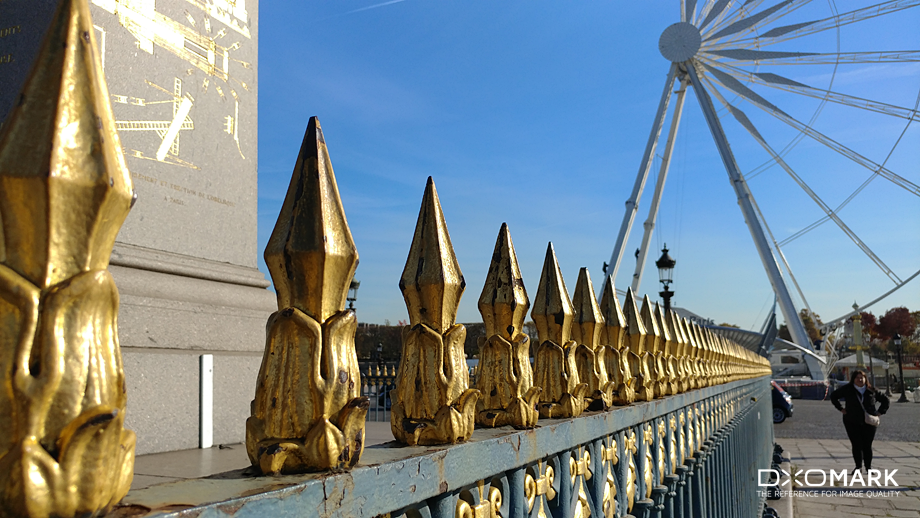
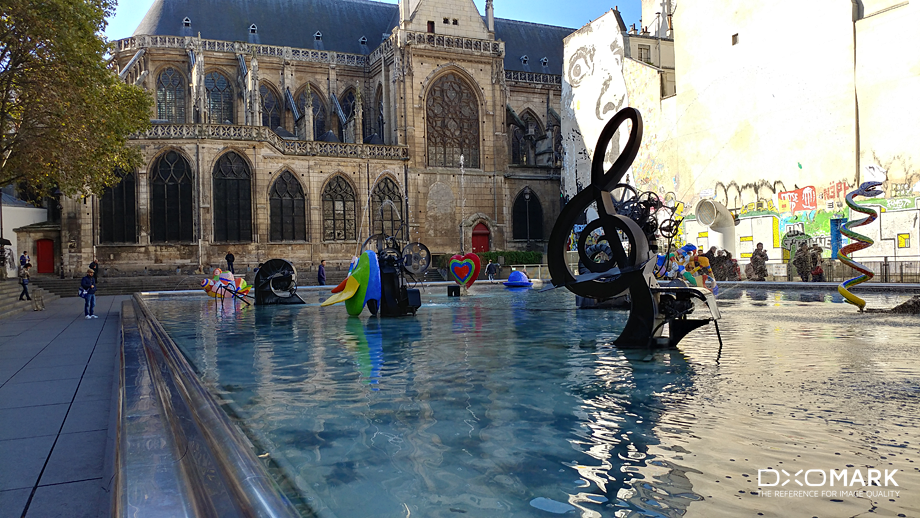
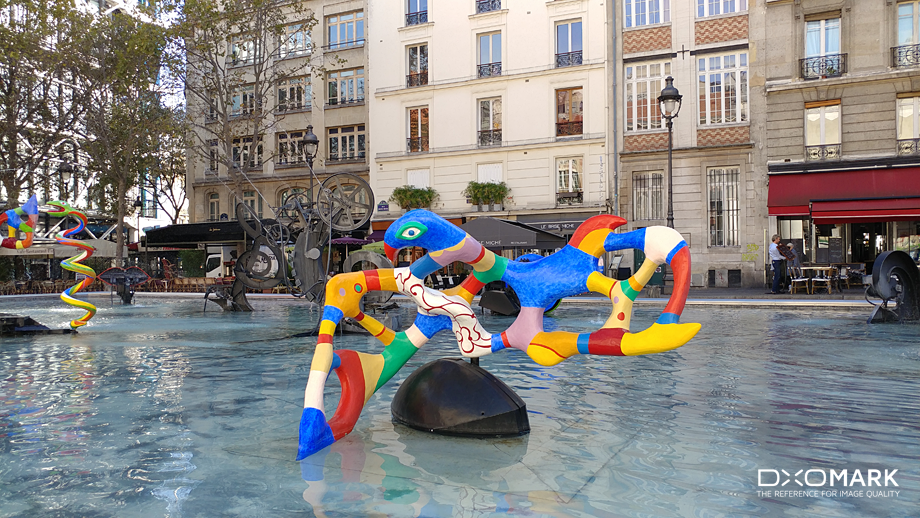
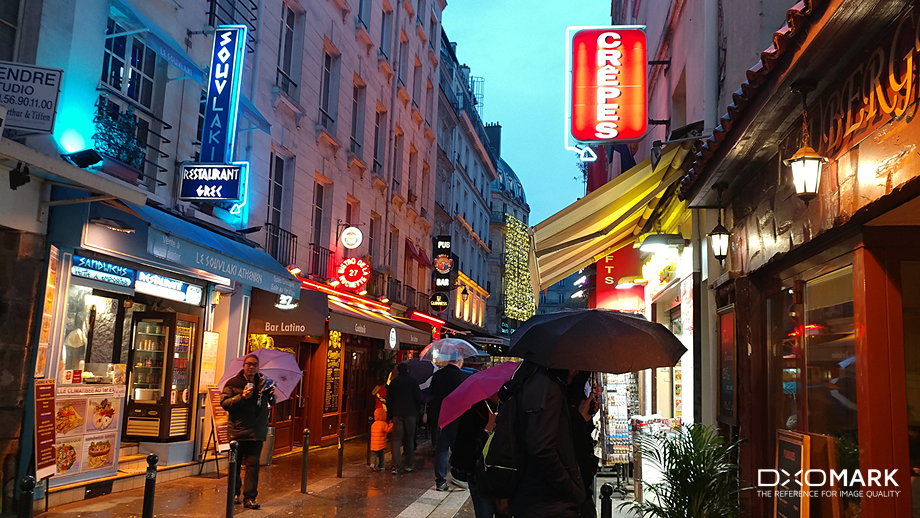


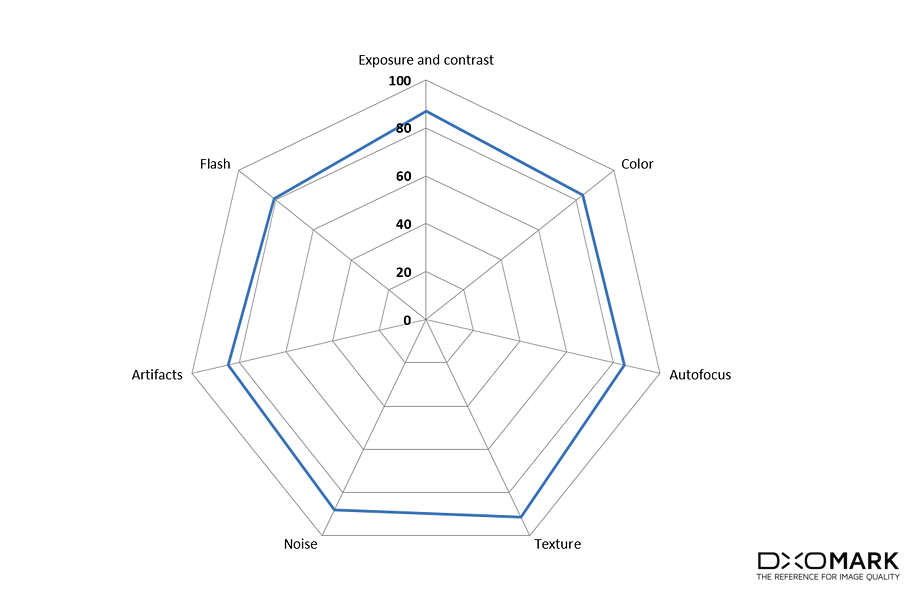

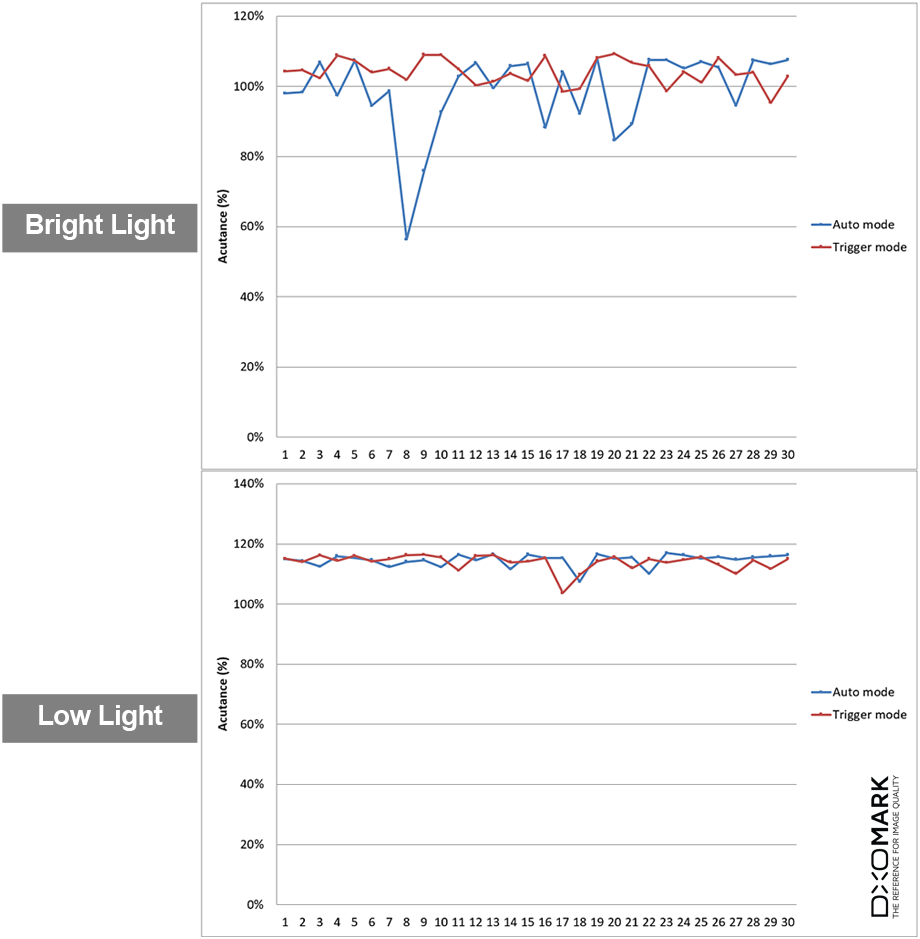
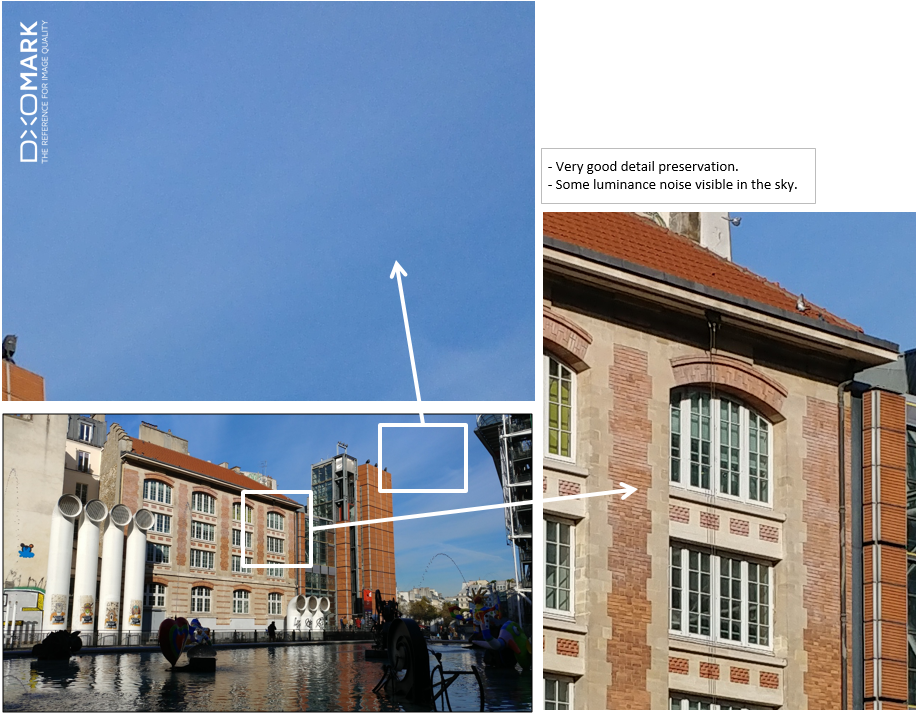
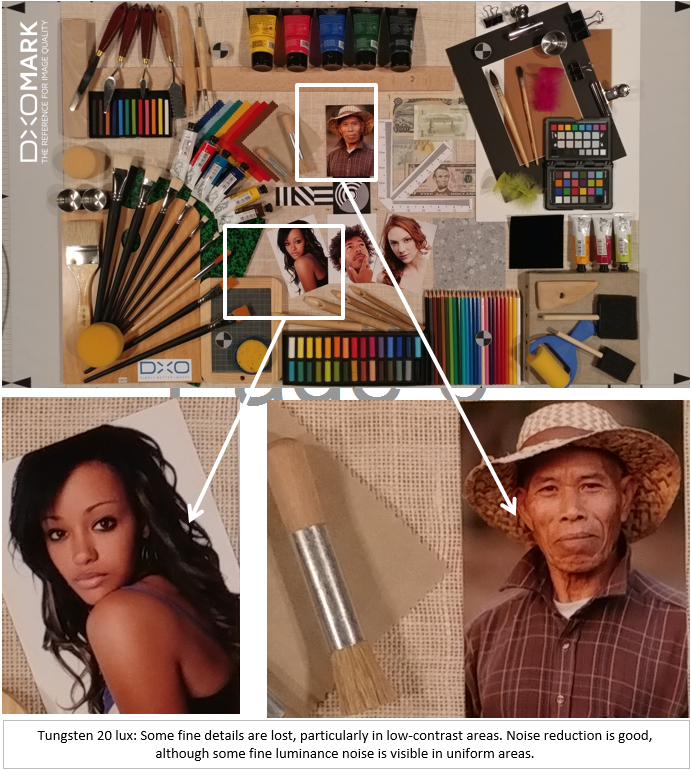
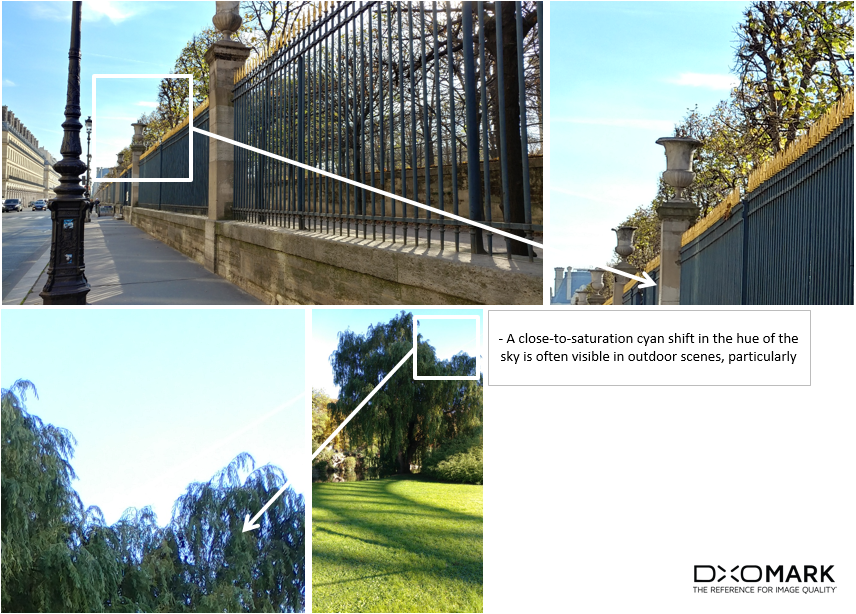
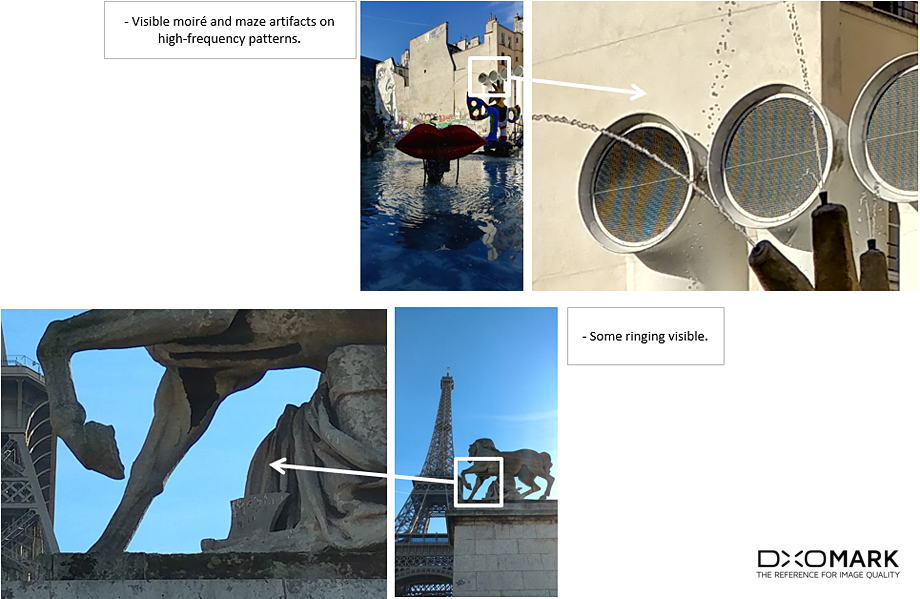

DXOMARK encourages its readers to share comments on the articles. To read or post comments, Disqus cookies are required. Change your Cookies Preferences and read more about our Comment Policy.